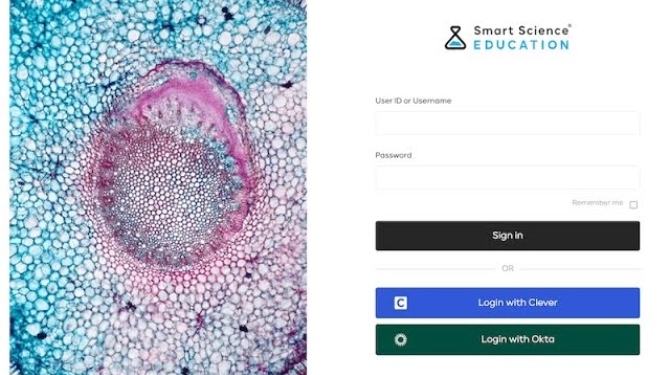Chemistry Academic Instructional Library

Smart Science Virtual Labs
Chemistry Online
UNIT 1- MEASUREMENT AND ANALYSIS
- Course Overview
- An Introduction to Chemistry and Metric Measurement
- Report: Metric System
- Quiz 1: Metric Conversions
- Showing Precision in Measurements
- Using Significant Figures to Show the Reliability of Data
- Using Scientific Notation with Significant Figures
- Quiz 2: Precision, Significant Figures, and Scientific Notation
- Measuring Volume in the Chemistry Laboratory
- Project: Practice in Measuring Metric Volumes
- Measuring Mass in the Chemistry Laboratory
- Project: Measuring Length with Precision
- Quiz 3: Measurement and Precision
- Observation and Hypothesizing
- Learning to Make Useful and Detailed Observations
- Using Graphs to Analyze Data
- Project: Tutorial for Making a Scatter Plot Using an Electronic Spreadsheet Program
- Quiz 4: Measurement to Graphs
- Doing Chemistry Your Way: Find Your Future
- Quiz 5: Chapter Review
- Special Project: Smart Science Labs – Simple Graphs
- Special Project: Smart Science Labs – Measurement
- Test
- Alternate Test
- Reference
UNIT 2 – STARTING THE INVESTIGATION: HOW TO IDENTIFY ELEMENTS, COMPOUNDS, AND MIXTURES
- The Basic Ingredient: Chemical Elements
- Quiz 1: Elements, Chemical and Physical Properties
- Using Chemical and Physical Properties to Identify Substances
- Creating Compounds: Investigating Chemical Changes
- Quiz 2: Elements to Compounds and Chemical Changes
- Report – Density
- Identifying Different Types of Mixtures
- Quiz 3: Chapter Review
- Special Project: Smart Science – Density
- Test
- Alternate Test
- Reference
UNIT 3 – EXPLORING LAWS FOR GASES AND CONSERVATION OF MASS
- Nothing Stays Put – The Basis for Diffusion and Pressure
- Gases and Kinetic Molecular Theory
- Project: Graphing Kinetic Energy
- Quiz 1: Diffusion and Kinetic Molecular Theory
- Pressure-Volume Relationships in Gases (Boyle’s Law)
- Quiz 2: Diffusion to P-V Relationships in Gases
- Temperature-Volume Relationships in Gases (Charles’ Law)
- Quiz 3: Diffusion to V-T Relationships in Gases
- Combined Gas Law
- Quiz 4: Diffusion to Combined Gas Law
- Counting Gas Particles: The Measure of the Mole
- How Big is a Mole? Avogadro’s Number
- Demonstrating Conservation of Mass with Balanced Equations
- Essay: Biography
- Quiz 5: Chapter Review
- Special Project: Smart Science – Gas Volume Pressure
- Special Project: Smart Science – Gas Volume Temperature
- Test
- Alternate Test
- Reference
UNIT 4 – THE DISCOVERY OF ATOMS: NATURE’S BUILDING BLOCKS
- The Golden Years of Chemistry
- Masters of Classic Atomic Theory
- Quiz 1: Golden Years to Masters
- Designing an Organizational Map: The Periodic Table
- Quiz 2: Golden Years to Periodic Table
- The Bohr Model Revisited
- Quiz 3: Golden Years to Bohr Model
- Charging Up: Ionization of Atoms
- Quiz 4: Golden Years to Ionization
- A Closer Look Inside: Nuclear Reactions
- Report: Fission Reactors
- Quiz 5: Chapter Review
- Special Project: Smart Science – Periodic Table Activity
- Test
- Alternate Test
- Reference
UNIT 5 – MOLECULAR STRUCTURE
- Chemical Accounting: Stoichiometry
- Valence Structure
- Quiz 1: Stoichiometry to Valence
- Determining Chemical Formulas
- Electron Availability: Prelude to Bonding
- Quiz 2: Stoichiometry to Prelude to BondingG
- Types of Chemical Bonds
- Polar Covalent Molecules and Dot Structures
- Quiz 3: Chapter Review
- Special Project:Smart Science – Hydrate Analysis
- Test
- Alternate Test
- Reference
UNIT 6 – SEMESTER REVIEW AND TEST
- Review
- Exam
- Alternate Exam—Form A
- Alternate Exam—Form B
UNIT 7 – CHEMICAL REACTIONS, RATES AND EQUILIBRIUM
- Evidence for Chemical Change
- Enthalpy of Reaction
- Using Gibbs Free Energy to Predict Spontaneous Reactions
- Quiz 1: Chemical Change to Enotropy and Gibbs Free Energy
- Factors that Affect Reaction Rates: Solution Concentration
- Factors that Affect Reaction Rate: Temperature, Catalysts, Concentration of Reactants
- Quiz 2: Chemical Change to Reaction Rate
- Reaction Equilibriums and Equilibrium Constants
- Activity: Exploring Factors that Affect Equilibrium
- Conditions Affecting Equilibrium
- Quiz 3: Chapter Review
- Special Project: Smart Science – Iron Tin Reaction
- Test
- Alternate Test
- Reference
UNIT 8 – EQUILIBRIUM SYSTEMS
- Chemist’s Toolbox
- Solutions
- Solution Concentration: Molarity
- Electrical Nature of Solutions
- Solubility
- Quiz 1: Toolbox To Solubility
- The Dissolving Process
- The Solubility Constant
- Quiz 2: Toolbox to Solubility Constant
- Acid-Base Equilibria
- pH Scale
- Titration of Acids and Bases
- Quiz 3: Toolbox to Titration
- Redox Equilibria
- Redox and Oxidation Potentials
- Activity: Solution Concentration vs. Conductivity
- pH Calculations
- Quiz 4: Chapter Review
- Special Project: Smart Science Virtual Labs – Solubility
- Test
- Alternate Test
- Reference
UNIT 9 – CARBON CHEMISTRY: HYDROCARBONS
- Organic Compounds
- Sources of Organic Compounds
- Quiz 1: Organic Compounds and Their Sources
- A Closer Look at the Carbon Atom
- Bonding in Organic Compounds
- Quiz 2: Organic Compounds to Bonding
- Alkanes: Saturated Hydrocarbons
- Unsaturated Hydrocarbons
- Quiz 3: Chapter Review
- Test
- Alternate Test
- Reference
UNIT 10 – CARBON CHEMISTRY: FUNCTIONAL GROUPS
- Common Reactions of Saturated Hydrocarbons
- Reactions of Unsaturated Hydrocarbons
- Quiz 1: Reactions of Saturated and Unsaturated Hydrocarbons
- Alcohols
- Aldehydes, Acids, and Ketones
- Esters
- Quiz 2: Reactions of Saturated and Unsaturated Hydrocarbons to Esters
- Nitrogen Functional Groups
- Proteins and Amino Acids
- Quiz 3: Chapter Review
- Special Project: Smart Science – Buffers
- Test
- Alternate Test
- Reference
UNIT 11 – CHEMISTRY REVIEW
- Measurement and Analysis
- Scientific Analysis and Significant Figures
- Elements, Compounds, and Mixtures
- Gases and Moles
- Quiz 1: Measurement to Gases and Moles
- Atomic Structure and Nuclear Reactions
- The Periodic Law
- Molecular Structure
- Chemical Reactions, Rates, and Equilibrium
- Reaction Dynamics
- Quiz 2: Measurement to Reaction Dynamics
- Solutions
- Solubility Equilibrium
- Neutralization
- Organic Compounds
- Hydrocarbon Chemistry
- Quiz 3: Chapter Review
- Test
- Alternate Test
- Reference
UNIT 12 – SEMESTER REVIEW AND TEST
- Review
- Exam
- Alternate Exam—Form A
- Alternate Exam—Form B
UNIT 13 – FINAL EXAM
- Final Exam
- Alternate Final Exam – Form A
- Alternate Final Exam – Form B

